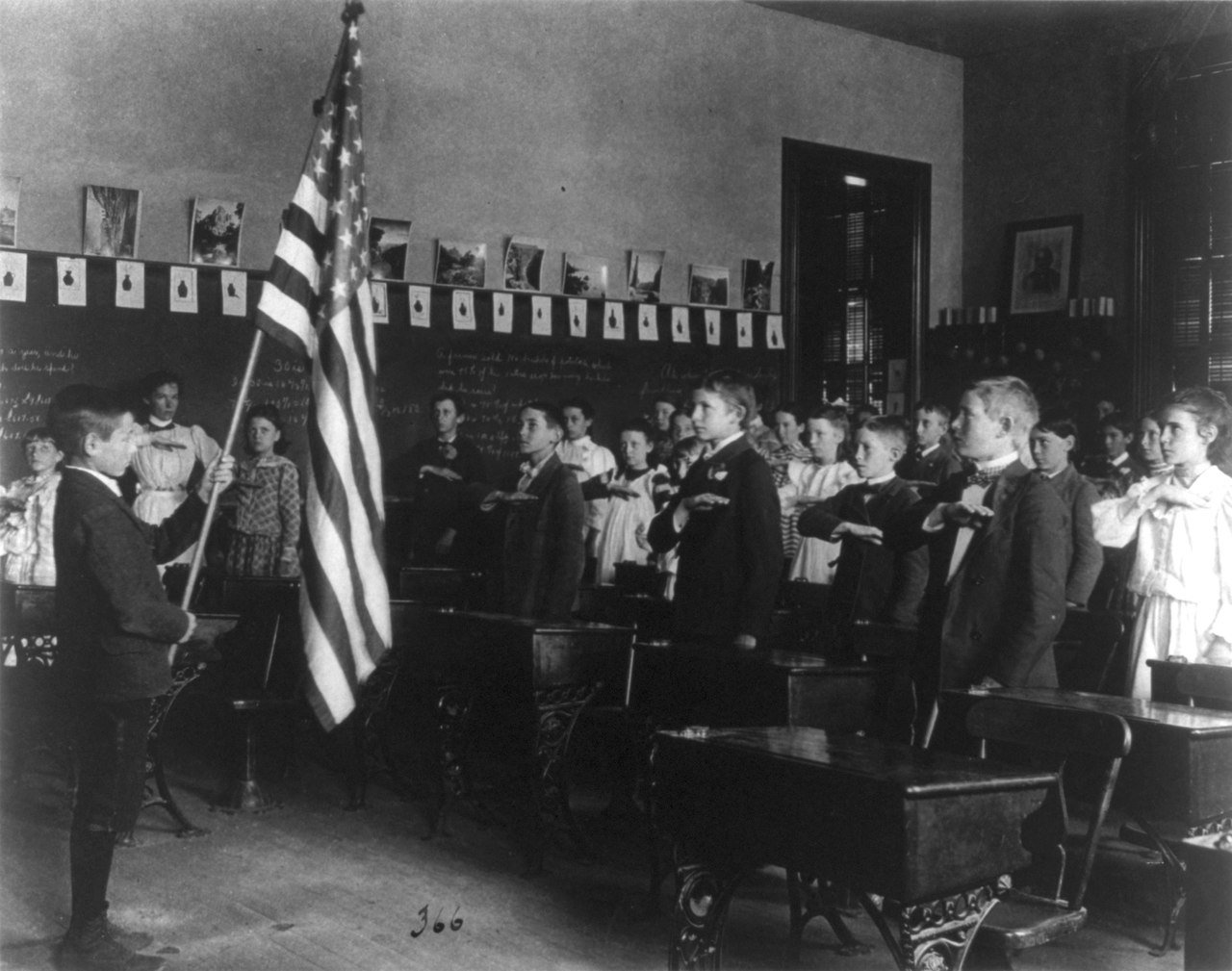The Secret History of the Pledge of Allegiance
The Secret History of the Pledge of Allegiance
A Journey Through Time
For generations, Americans have stood with hands over hearts, reciting the Pledge of Allegiance in schools, public meetings, and patriotic ceremonies. While it is one of the most well-known expressions of national loyalty, few understand its history. From its creation by Francis Bellamy in 1892 to the many revisions it has undergone, the Pledge reflects the evolving values and identity of the United States.
The Origins of the Pledge of Allegiance
The Pledge of Allegiance was first written in 1892 by Francis Bellamy, a Baptist minister and advocate of American nationalism. Commissioned by The Youth’s Companion, a popular youth magazine, Bellamy designed the Pledge as a brief, inspiring recitation for schoolchildren to celebrate the 400th anniversary of Christopher Columbus’s arrival in the Americas. President Benjamin Harrison soon endorsed the Pledge as part of Columbus Day observances in schools.
Bellamy’s original Pledge read:
“I pledge allegiance to my Flag and the Republic for which it stands, one nation, indivisible, with liberty and justice for all.”
Interestingly, Bellamy originally considered including the word “equality,” but omitted it due to the political climate of the time, as equal rights for African Americans and women were still highly contentious issues.
Early Revisions: Adapting to a Changing Nation

The first significant modifications to the Pledge occurred in 1923 at the National Flag Conference. To ensure clarity for newly arrived immigrants, the phrase “my Flag” was changed to “the Flag of the United States.” A year later, “of America” was added, making the Pledge read:
“I pledge allegiance to the Flag of the United States of America and the Republic for which it stands, one nation, indivisible, with liberty and justice for all.”
Despite Bellamy’s resistance to these changes, they were widely accepted and further solidified the Pledge as a key part of American civic culture. By 1942, Congress had formally recognized the Pledge as the official national pledge.
At this time, the Pledge was often accompanied by the Bellamy salute, which involved extending the right arm outward. However, due to its resemblance to the Nazi salute during World War II, the U.S. government replaced it with the familiar hand-over-heart gesture in 1942.
The Addition of "Under God" and Cold War Influences
Perhaps the most controversial change to the Pledge came in 1954. During the Cold War, the United States sought to differentiate itself from communist regimes, which were often perceived as atheistic. With strong advocacy from religious organizations such as the Knights of Columbus, Congress added the phrase “under God” to the Pledge:
“I pledge allegiance to the Flag of the United States of America and the Republic for which it stands, one nation, under God, indivisible, with liberty and justice for all.”
This revision sparked debates about the separation of church and state, with legal challenges continuing to this day. Despite these controversies, the Pledge remains a cornerstone of American civic life.
Legal Challenges and Supreme Court Rulings
The Pledge of Allegiance has been the subject of several landmark Supreme Court cases. In West Virginia v. Barnette (1943), the Court ruled that students could not be compelled to recite the Pledge, citing First Amendment protections. This decision reinforced the idea that patriotism must be voluntary rather than coerced.
More recently, cases challenging the inclusion of “under God” have been brought before the courts, though the phrase remains intact. These legal battles continue to shape discussions about the role of national symbols in public life.
The Role of Flags in Patriotism
Throughout the history of the Pledge, the American flag has remained its central symbol. As the Pledge evolved, so too did the nation’s appreciation for its flag as a unifying emblem of freedom and resilience. Whether at school ceremonies, military events, or national holidays, the flag stands as a powerful representation of our American Made values.
At Gettysburg Flag Works, we offer a range of high-quality historical flags that reflect the rich legacy of America’s past. Some of our most popular selections include Revolutionary War Flags and our highest quality, Modern American Flags for home or institutional display.
The Pledge of Allegiance in American Culture
Despite its many changes and the controversies surrounding its wording, the Pledge of Allegiance remains a deeply ingrained part of American identity. It is recited at schools, government meetings, and major national events, continuing to instill a sense of unity and patriotism among citizens.
Whether you are looking to celebrate your patriotic spirit or explore the deep history of America’s national symbols, our collection of American and patriotic flags provides a meaningful way to display your allegiance to the United States.
To honor this legacy, consider displaying an American flag at your home, school, or workplace. Explore our flag collections and be part of a tradition that continues to unite generations of Americans.